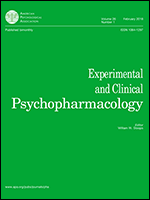
“A pharmaceutical grade formulation of cannabidiol (CBD) has been approved for the treatment of Dravet syndrome and Lennox-Gastaut syndrome; however, this formulation is not yet available to patients outside the USA. In addition, CBD is thought to have broad anti-seizure properties that may be beneficial for other types of intractable epilepsy.
OBJECTIVE:
The aim of this study was to evaluate the efficacy, safety and tolerability of artisanal medical CBD oil in patients with developmental and epileptic encephalopathy (DEE) at the tertiary epilepsy center of Bambino Gesù Children’s Hospital in Rome, Italy.
RESULTS:
Twenty-nine patients were enrolled in this study (41.4% male). The mean duration of exposure to artisanal CBD was 11.2 months [range 6-25 months; standard deviation (SD) ± 4.4 months]. Mean age at study enrollment was 9.3 years (range 1.9-16.3 years; SD ± 4.7 years). Eleven out of 29 patients (37.9%) had a ≥ 50% improvement in seizure frequency; one patient became seizure free. None of the patients reported worsening seizure frequency; however, 18 patients (62.1%) experienced no beneficial effect regarding seizure frequency. Adverse effects were reported in seven patients (24.14%), most commonly somnolence, decreased appetite and diarrhea. Adverse events were mild and transient, and no dose modification of CBD or other AEDs was required.
CONCLUSIONS:
These data suggest that CBD may have beneficial effects in patients with DEE and an acceptable safety profile. Placebo-controlled randomized trials should be conducted to formally assess the safety and efficacy of CBD in patients with DEE.”




 “The administration of cannabidiol has shown promising evidence in the treatment of some neuropsychiatric disorders, including cocaine addiction. However, little information is available as to the mechanisms by which cannabidiol reduces drug use and compulsive seeking.
“The administration of cannabidiol has shown promising evidence in the treatment of some neuropsychiatric disorders, including cocaine addiction. However, little information is available as to the mechanisms by which cannabidiol reduces drug use and compulsive seeking.


 “Cannabidiol (CBD) is a natural compound of cannabis, which exerts complex and widespread immunomodulatory, antioxidant, anxiolytic, and antiepileptic properties. Many experimental data suggest that CBD could have several types of application in alcohol use disorder (AUD) and alcohol-related damage on the brain and the liver.
“Cannabidiol (CBD) is a natural compound of cannabis, which exerts complex and widespread immunomodulatory, antioxidant, anxiolytic, and antiepileptic properties. Many experimental data suggest that CBD could have several types of application in alcohol use disorder (AUD) and alcohol-related damage on the brain and the liver.